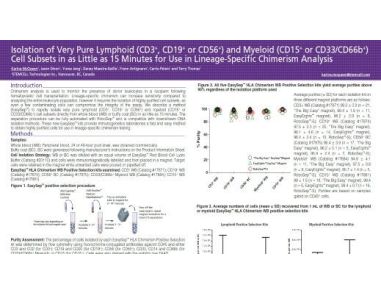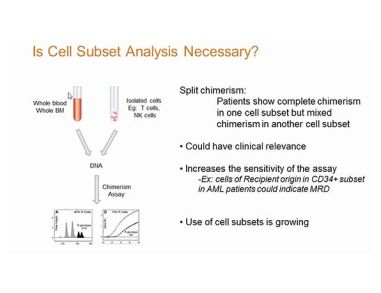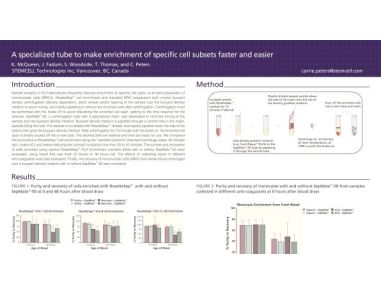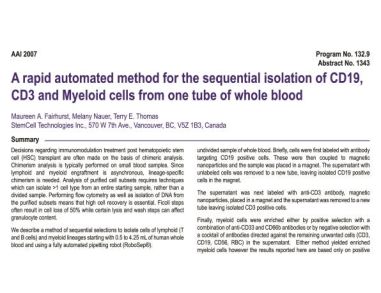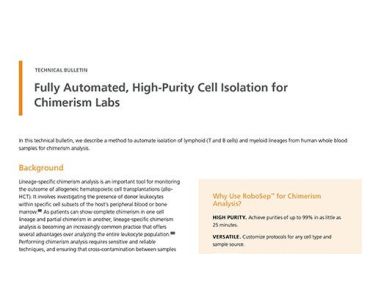Areas of Interest
-
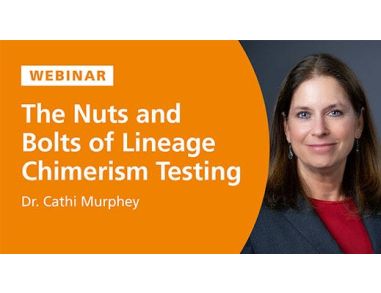 The Nuts and Bolts of Lineage Chimerism Testing Chimerism analysis is used to monitor the outcome of allogeneic hematopoietic stem cell transplantation. By looking at the presence of donor leukocytes within specific cell subsets of the host’s peripheral blood, one can assess the success of donor cell engraftment or detect early graft failure, rejection, or relapse. Prior to performing chimerism analysis, different cell subsets must be isolated from the same sample to perform lineage-specific analysis. In this webinar, Dr. Cathi Murphey (Immunogenetics Lab Director; Southwest Immunodiagnostics, Texas) will discuss available technologies for isolating different cell subsets from the same sample and improving cell purity prior to chimerism analysis.
The Nuts and Bolts of Lineage Chimerism Testing Chimerism analysis is used to monitor the outcome of allogeneic hematopoietic stem cell transplantation. By looking at the presence of donor leukocytes within specific cell subsets of the host’s peripheral blood, one can assess the success of donor cell engraftment or detect early graft failure, rejection, or relapse. Prior to performing chimerism analysis, different cell subsets must be isolated from the same sample to perform lineage-specific analysis. In this webinar, Dr. Cathi Murphey (Immunogenetics Lab Director; Southwest Immunodiagnostics, Texas) will discuss available technologies for isolating different cell subsets from the same sample and improving cell purity prior to chimerism analysis. -
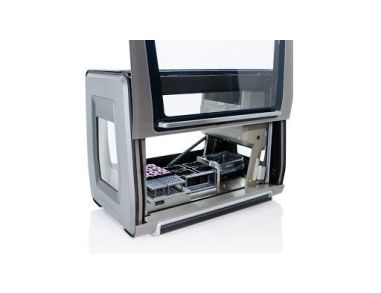 Automate Cell Isolation for Up to 16 Samples with the RoboSep™-16 Cell Separation Instrument Features and benefits of using the fully automated cell isolation platform RoboSep™-16 which allows you to efficiently isolate cells from up to 16 samples simultaneously
Automate Cell Isolation for Up to 16 Samples with the RoboSep™-16 Cell Separation Instrument Features and benefits of using the fully automated cell isolation platform RoboSep™-16 which allows you to efficiently isolate cells from up to 16 samples simultaneously -
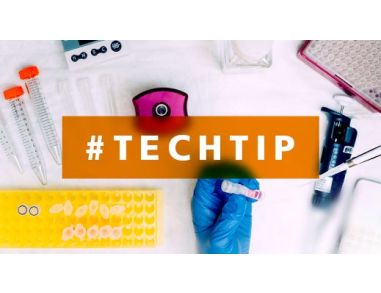 Isolate Multiple Cell Types from a Single Sample with Sequential Isolation Sequential separation, for higher recovery of purified cells from limited sample size and isolation of multiple cell types, is ideal for chimerism analysis
Isolate Multiple Cell Types from a Single Sample with Sequential Isolation Sequential separation, for higher recovery of purified cells from limited sample size and isolation of multiple cell types, is ideal for chimerism analysis -
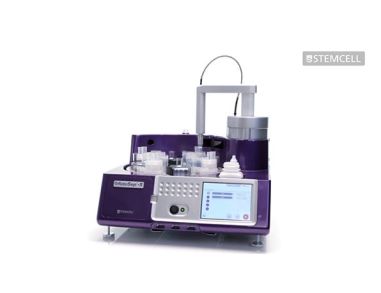 Automate Cell Isolation with the RoboSep™-S Cell Separation Instrument Streamline your cell isolations using the fully automated RoboSep™-S
Automate Cell Isolation with the RoboSep™-S Cell Separation Instrument Streamline your cell isolations using the fully automated RoboSep™-S -
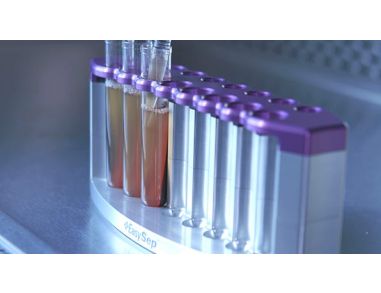 Cell Isolation Directly from Whole Blood without RBC Lysis or Centrifugation: EasySep™ Direct Introduction to the EasySep™ Direct immunomagnetic cell separation platform
Cell Isolation Directly from Whole Blood without RBC Lysis or Centrifugation: EasySep™ Direct Introduction to the EasySep™ Direct immunomagnetic cell separation platform


 EasySep™小鼠TIL(CD45)正选试剂盒
EasySep™小鼠TIL(CD45)正选试剂盒





